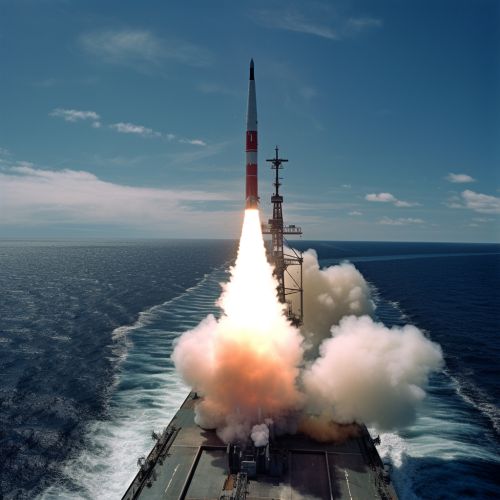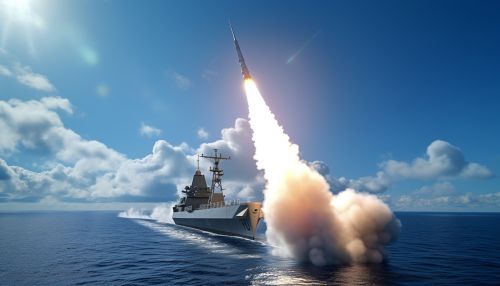RIM-7 Sea Sparrow
Development and Design
The RIM-7 Sea Sparrow is a US ship-borne short-range surface-to-air missile system, primarily intended for defense against anti-ship missiles. Its design is based on the earlier AIM-7 Sparrow air-to-air missile. The Sea Sparrow has undergone several upgrades in its electronics, propellant, and warhead technology since its introduction in the late 1960s.


The Sea Sparrow missile system was developed by the Raytheon Company and General Dynamics, with the purpose of providing naval vessels with a capable self-defense system against a variety of threats. The system was designed to be a rapid-reaction, all-weather, quick-reaction missile capable of engaging both high-performance aircraft and anti-ship cruise missiles.
Operational History
The RIM-7 Sea Sparrow has been in service with the US Navy and several other navies around the world since the late 1960s. It has been used in several conflicts, including the Falklands War and the Gulf War, proving its effectiveness in a combat environment.
Technical Specifications
The RIM-7 Sea Sparrow is approximately 12 feet long, with a diameter of 8 inches and a wingspan of 3 feet 4 inches. It is powered by a solid-propellant rocket motor, which gives it a speed of over Mach 2. The missile carries a 90-pound blast-fragmentation warhead and uses semi-active radar homing for guidance.
Variants
There have been several variants of the RIM-7 Sea Sparrow developed over the years, including the RIM-7H, RIM-7F, and RIM-7P. These variants have introduced improvements in range, guidance, and warhead technology, among other things.
